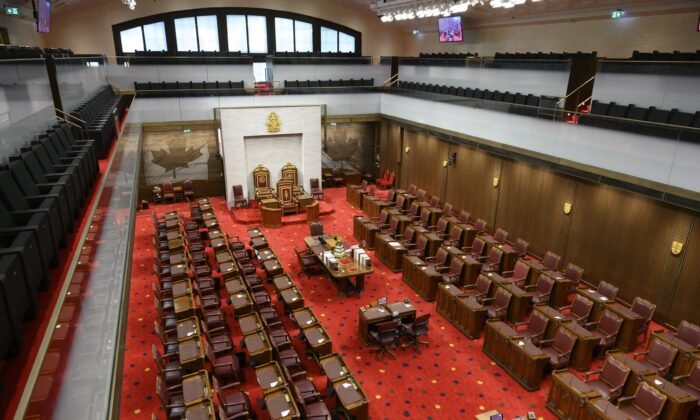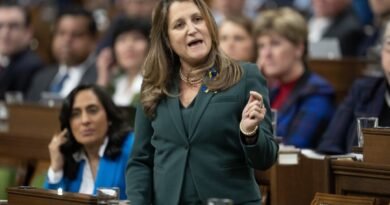Canadian Senate Committee Recommends Record-High Budget for Senate Administration
The committee says it is to provide the ‘best possible’ environment for senators to contribute effectively to federal legislation and public policies.
Canada’s Senate committee that considers financial and administrative matters has proposed increasing the upper house’s spending to a record high of nearly $135 million for the 2024–25 fiscal year, records show.
Executive Summary of its 2024–25 budget, as first covered by Blacklock’s Reporter on Jan. 5.
Dec. 14, 2023, meeting.
“[T]he report is based on four principles: maintaining a high quality of service to senators; support for environmental measures in the workplace; good stewardship of public funds; and focus on supporting core activities,” Mr. Forest told the committee.
Breakdown
The estimate includes two separate budgetary programs: the statutory budget and non-statutory budget. Statutory budget amounts, such as senators’ allowances, pensions, and travel and telecommunications expenses, don’t need parliamentary approval every year.
According to the report, the bulk of the spendings fall under the non-statutory budget, which are expenses that must be voted on by Parliament annually.
The main non-statutory spendings are $57,176,624 on administration and corporate accounts—10.4 percent ($5,403,614) more than the current 2023–24 fiscal year—and $31,681,093 on “Senators and House Officers, caucuses and recognized parliamentary groups”—3.8 percent ($1,171,433) more than fiscal 2023–24.
joint directorate of the Senate and the House of Commons that coordinates Parliament’s external relations and activities, will also see a bigger non-statutory budget allocation. Its amount will climb to $4,137,648—9.6 percent ($363,879) more than the current $3,773,769.
As for the statutory budget, which are expenditures that “have been given continuing authority by Parliament in previous years and no further approval is required,” a notable expenditure is the senators’ travel and living expenses in the Parliamentary District in and around Ottawa. This spending will see an increase of 14.8 percent ($974,400), climbing from $6,565,632 to $7,540,032.
Senator’s indemnities and pensions will rise by 2.9 percent ($628,897), going from $21,428,352 to $22,058,249. However, contributions to the senators’ employee benefit plans—the Canada Pension Plan and Employment Insurance—will drop by 2.8 percent ($277,951) in the new fiscal year, falling from $9,771,775 to $9,493,824.
Parliament of Canada’s website, senators currently receive a yearly base salary, known as a basic sessional indemnity, of $169,600. The amount represents a 3.1 percent ($5,100) growth in salary compared to that of July 2022, at $164,500. The specifics of the next pay raise will be determined closer to April 1 of this year.
‘No Information’
The increase in Senate spending follows cabinet’s promise in
Budget 2023 to cut billions from “discretionary” budgets such as travel and consultants. The budget said the Liberals planned to “
refocus” government spending to identify $15.4 billion in savings over the next five years, from 2023–24 to 2027–28, and $4.5 billion annually thereafter.
outlined her government’s plan to slash $500 million from federal spending for the current 2023–24 fiscal year. Estimates she tabled in the House showed the Department of National Defence facing the biggest hit, being expected to cut spendings by
$211,082,000, or 42.2 percent of the planned amount, by March 31, 2024.
report to parliamentarians raising issues concerning the planned savings.
“While the Government has provided some information on the planned savings of $500 million in 2023–24 for reducing spending on consulting, professional services and travel, there is no information on the remaining $14.9 billion in planned savings, as well as details on the potential impact on programs and services,” the report said.






